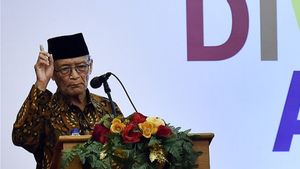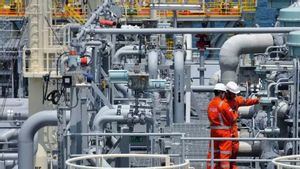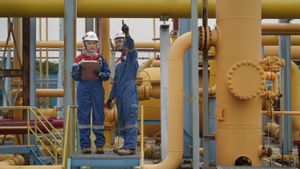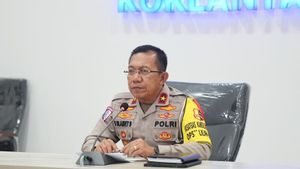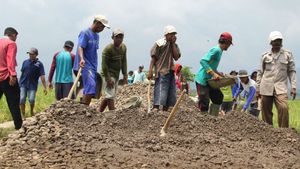JAKARTA - At 10.02 today, August 27, at the end of the 19th century or in 1883, the eruption of Mount Krakatoa reached its climax. Unleashed the greatest explosion, the loudest sound, the most devastating volcanic event in recorded modern human history that killed more than 36,000 people.
The Krakatoa explosion is the fifth-largest in the geological history of the planet. Indeed, there are still bigger explosions such as Mount Toba and Tambora in Indonesia, Taupo in New Zealand, and Katmai in Alaska. But they are all eruptions that occurred long ago. However, Krakatoa exploded at the end of the 19th century.
The world has become a whole new place: modern times. Many sophisticated humans could witness the volcano's raging.
Within seconds, people in Java, Boston, Bombay, and Brisbane, almost all knew about the incident. It happened because the eruption of Krakatoa in 1883 was the world's first major disaster that occurred after the discovery of the underwater telegraph.
The newspapers were busy reporting it. The descriptions of the incident became even more compelling because they were really up to date. Phrases that initially were not so well known - Java, Sumatra, the Sunda Strait, Batavia - suddenly became everyone's discussion.
The name Krakatoa has become part of the world's cultural lexicon. There is a famous film about the place, even though it puts it on the wrong side of East Java. There is also a children's book about the place, though it misplaces it in the Pacific Ocean instead of the Indian Ocean.
Tsunami
The Krakatoa explosion also caused the emergence of a Tsunami wave. The giant waves moved west at ten in the morning on August 27.
Two types of waves were detected. First, a long wave, which moved back and forth with a period of up to two hours. While the other was a shortwave, steeper with irregular repetition and shorter frequency.
Iskandarsyah et al, in his writing entitled "Chronology of the 1883 Krakatoa Tsunami in the Ujung Kulon Peninsula" revealed that the tsunami caused by the Krakatoa explosion occurred 4 times. In Ujung Kulon, Banten, for example, the tide came 30 minutes after the eruption.
Meanwhile, according to Simon Winchester in his book Krakatoa: When the World Exploded August 27, 1883 (2003) translation from Krakatoa: The Day the World Exploded, the tsunami waves also destroyed Anyer and Teluk Betung. Immediately the sea level dropped to 10 feet below the normal level and then rose sharply back up and slowly descended.
The tsunami occurred at many points on the coast of Java and Sumatra and killed so many people there. The waves were so huge near the volcano that it killed at least thousands of people, according to Winchester.

Hell Clouds
The impact of the Krakatoa eruption on world consciousness was profound and far stronger than the impact of the other four volcanic explosions that had occurred in the previous period. According to Simon Winchester (2003), the volcanic explosion also had an impact on the climate.
The dust in the sky lowered the temperature of the planet. It changed the appearance of skies around the world, made barometric meter needles, and affected tidal waves thousands of miles away.
This disaster even panicked the American firefighters who thought they had to extinguish the burning hellfire. When in fact, it is just a sight of a sunset filled with processions of red clouds from Mount Krakatoa.
People in Poughkeepsie City, New York, were curious and half panicked at the red sky. For some, it was like a sign of an apocalypse that frightened them. Only later, when they discovered that the situation was caused by dust from a distant volcano, they were able to relax and begin to enjoy the terrifying sight they would remember for a long time.
After researching in the 1900s, the eruption of Mount Krakatoa did decrease temperatures around the world. The average drop was about one degree Fahrenheit.
The English, Chinese, Japanese, Arabic, and French versions are automatically generated by the AI. So there may still be inaccuracies in translating, please always see Indonesian as our main language. (system supported by DigitalSiber.id)



